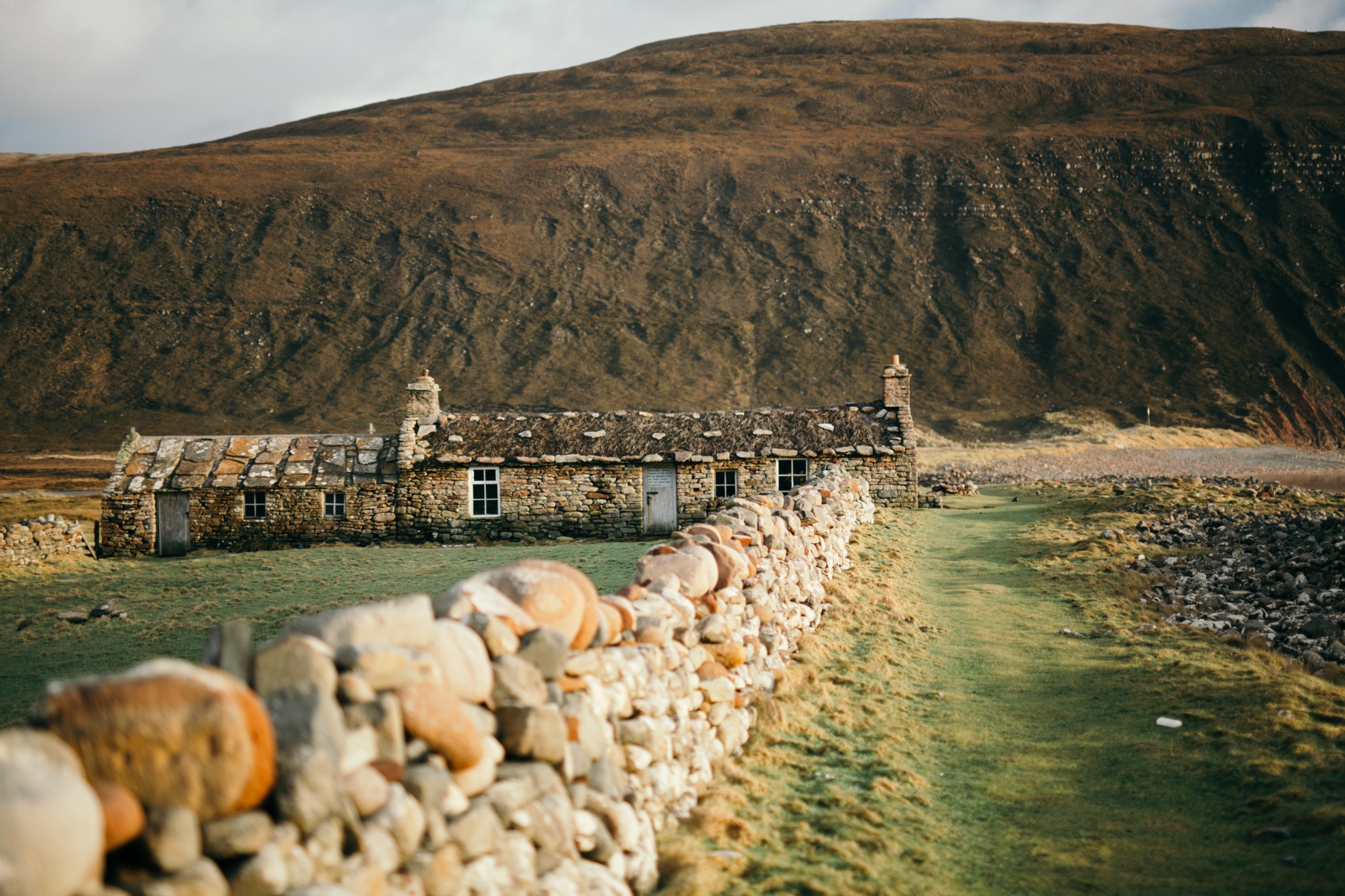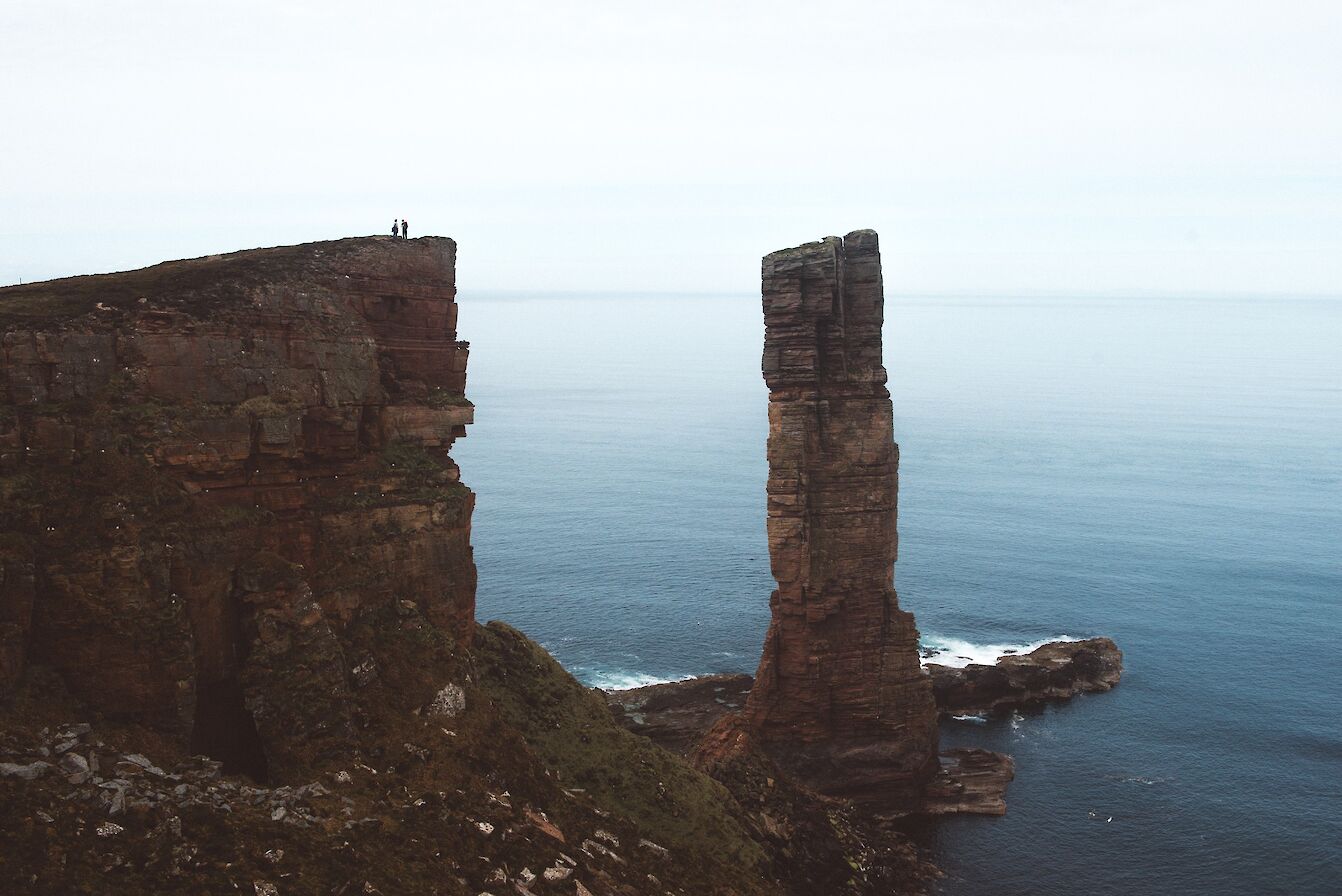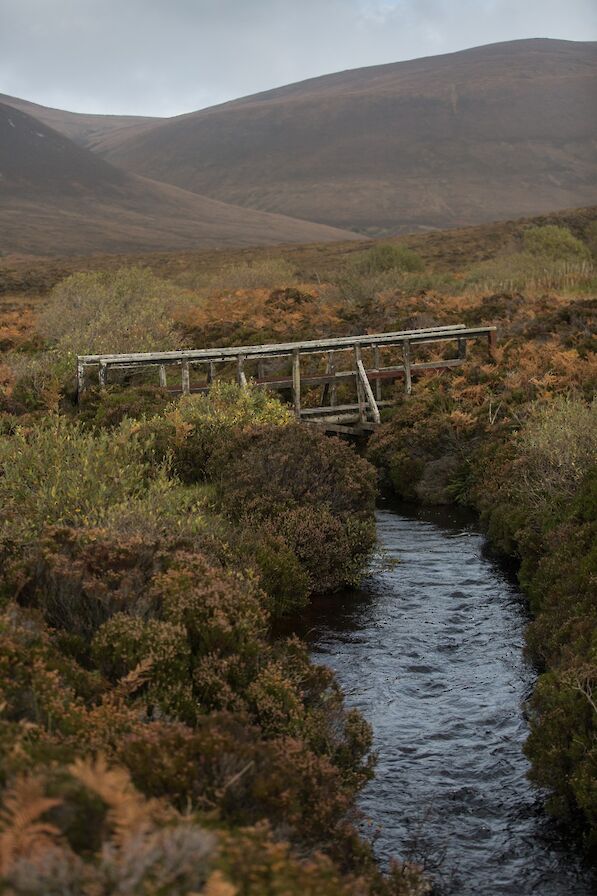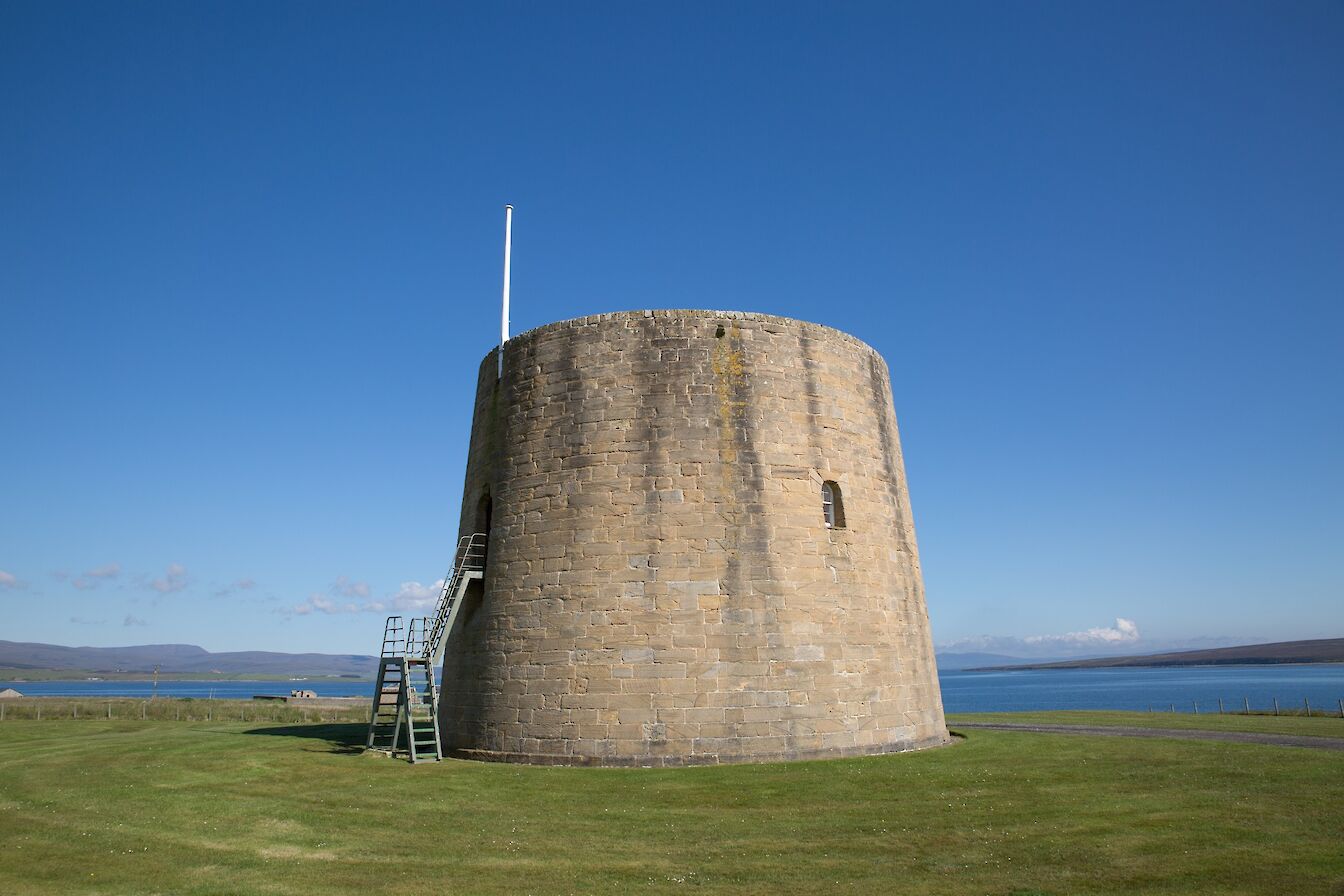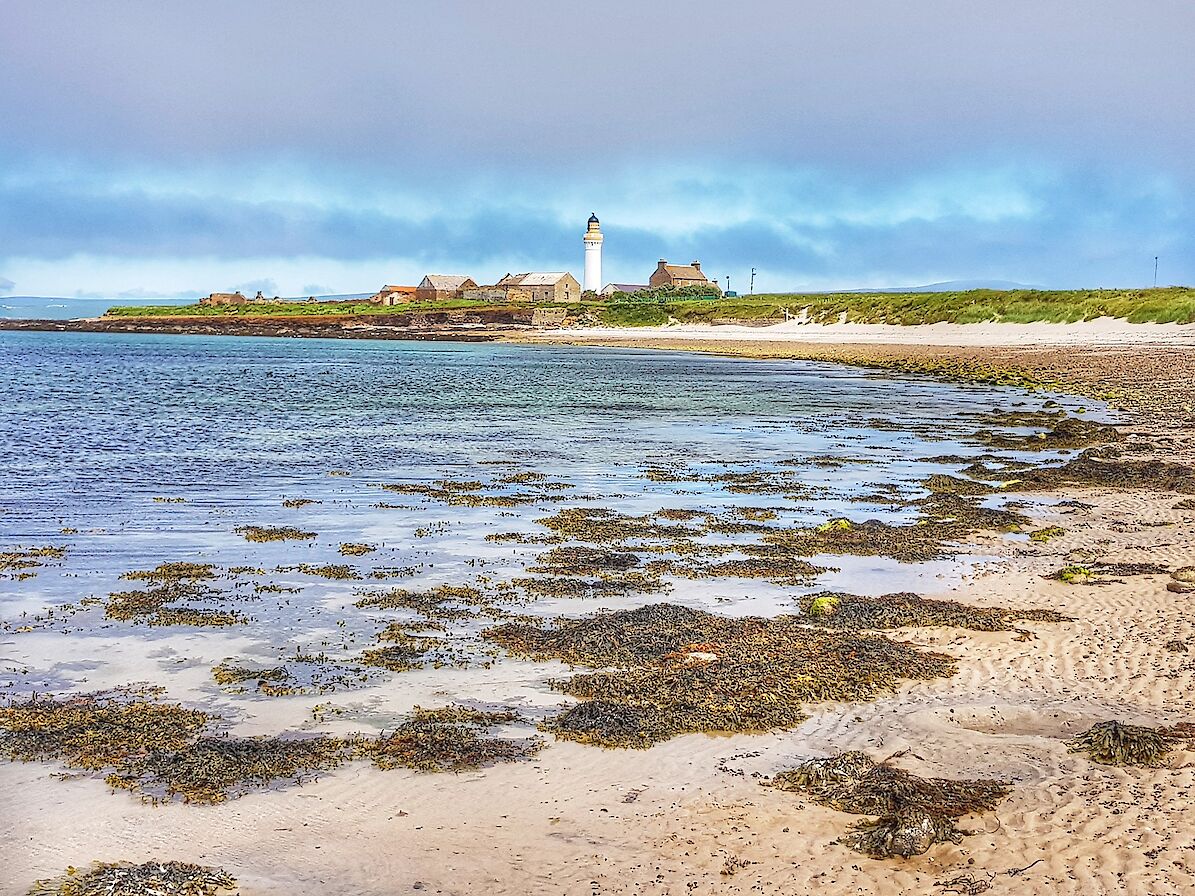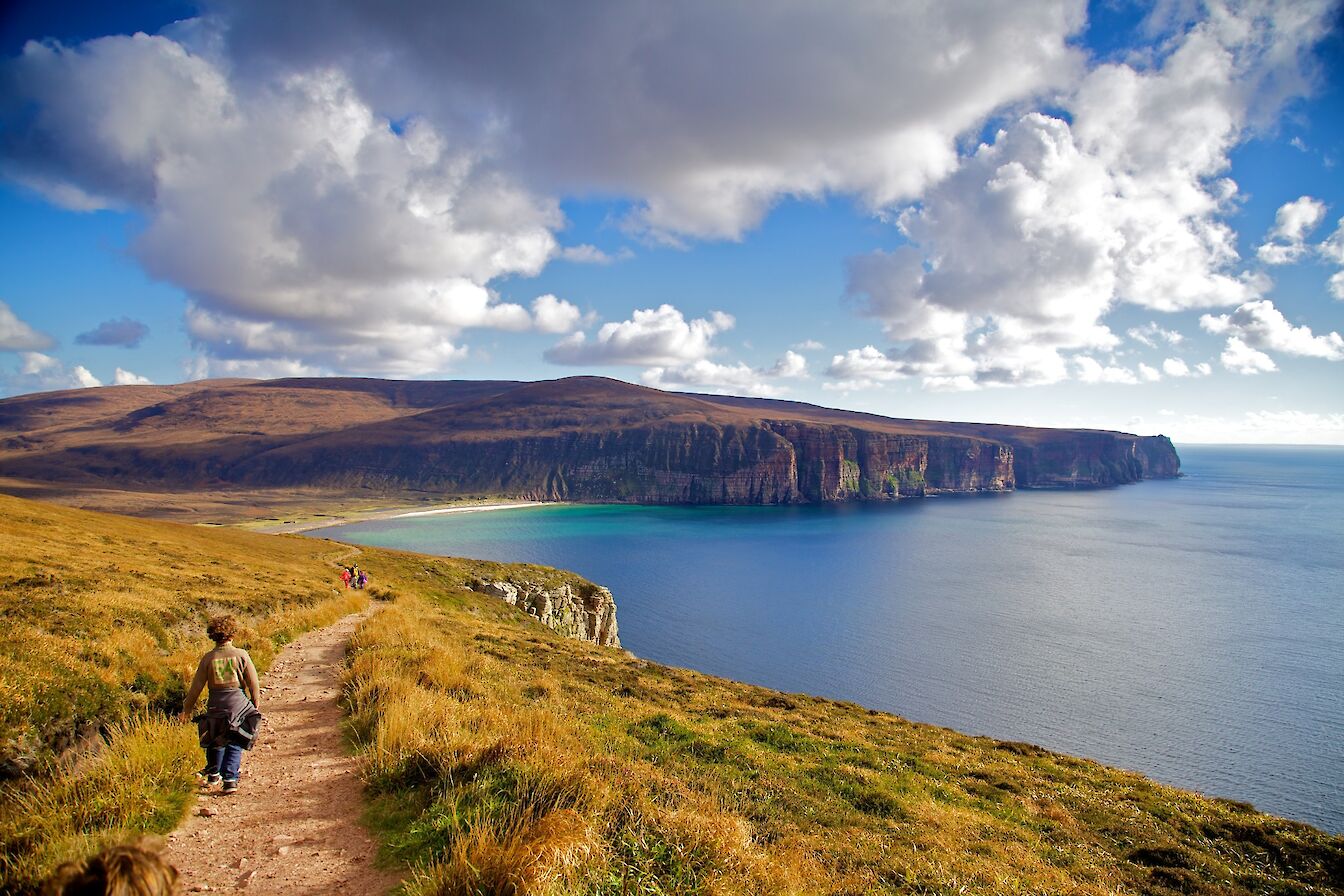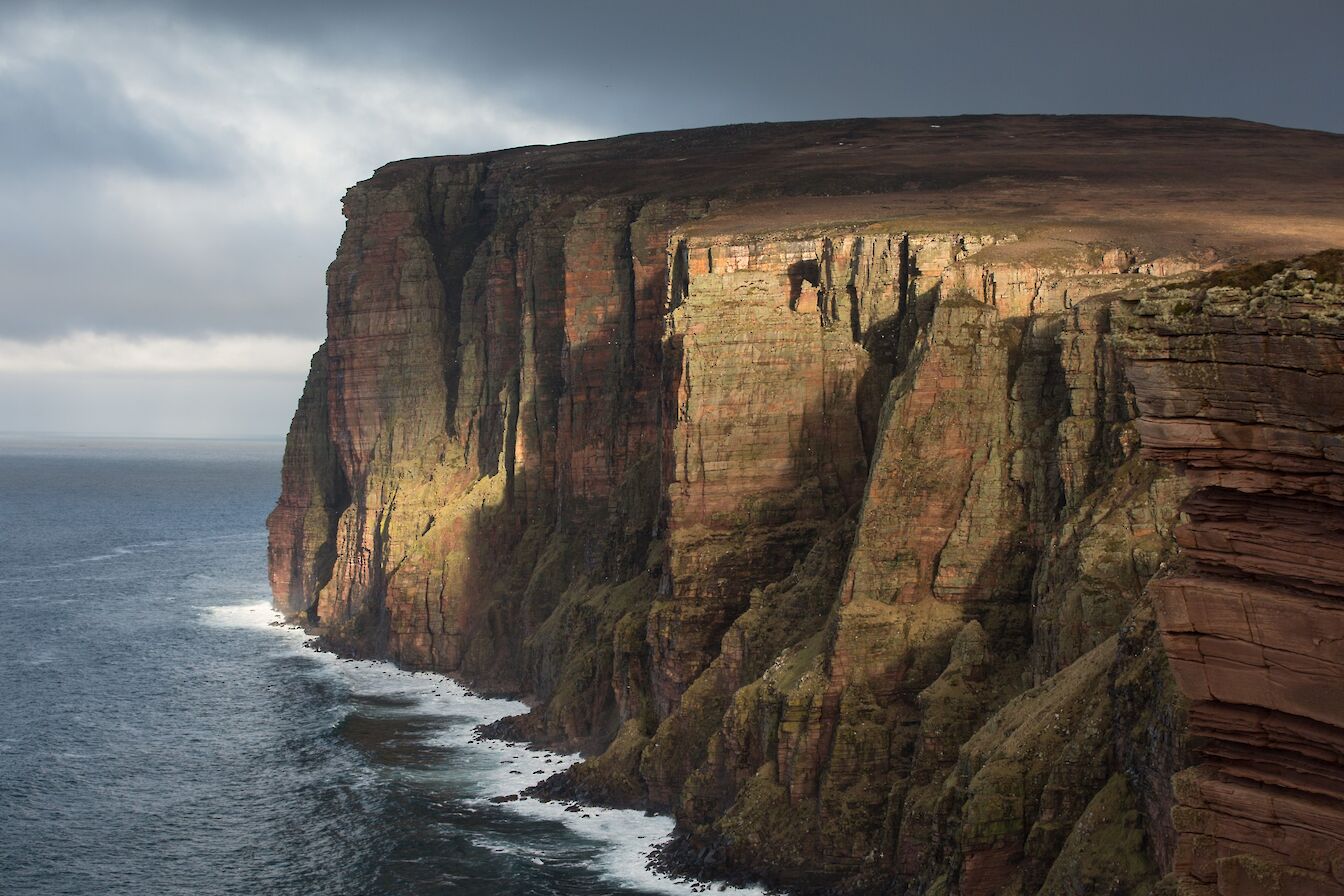Named ‘high island’ by the Vikings, Hoy certainly lives up to the title.
Orkney's second largest island rises dramatically from the sea. With almost-mountainous moorland and glacial valleys, it's an incredible landscape to explore.
You can see its hills looming large on the local landscape from all over. Ward Hill is Orkney’s highest at more than 1500 feet, whilst the towering cliffs on the west coast include St John’s Head – at 1136 feet, it’s the highest vertical cliff face in the UK.
But the island’s most famous location is the Old Man of Hoy, the sandstone sea stack that stretches out of the surf just south of St John’s Head. This fragile tower is a mecca for climbers and has even welcomed base jumpers and a tight rope walker. The walk here from the beautiful Rackwick should be on everyone’s Orkney itinerary. Remember to visit the beach at Rackwick too, with its silver sand and sandstone cliffs. On the hillside overlooking the bay you’ll also find Craa’s Nest Museum, showcasing what life in this atmospheric crofting community would have been like in years gone by.
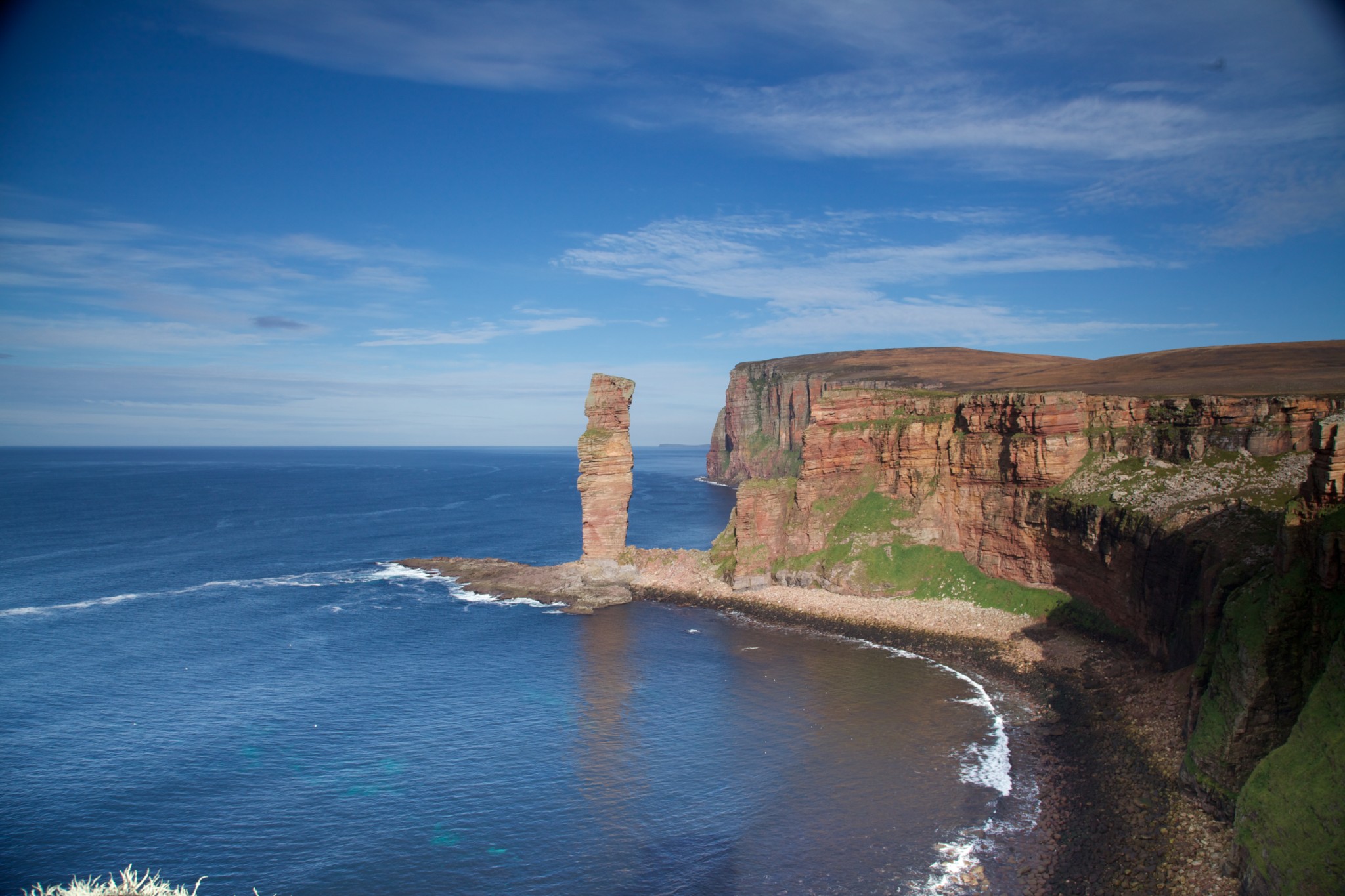
The Old Man of Hoy Hoy is an island best experienced outdoors, and its wild landscape provides plenty of nature and wildlife opportunities. The Hoy RSPB reserve features around 10,000 acres of moorland and sea cliffs. It has also been home to a pair of breeding white-tailed eagles in recent years, and there’s lots of other birdlife to spot. You’ll also find Britain’s most northerly natural woodland at Berriedale, as well as the mysterious Dwarfie Stane, a 5000-year-old rock cut tomb.
All of these locations are found in the north end of Hoy, which is served by a passenger ferry operating between Stromness and Moaness. Close to the terminal is the Hoy Heritage Centre, the perfect introduction to the history of the area.
The rest of Hoy has plenty going for it. The island played an important role in both World Wars and there are excellent examples of wartime heritage to be found throughout, especially at Scad Head, with its impressive gun battery, and at Lyness, home to the Scapa Flow Visitor Centre & Museum.
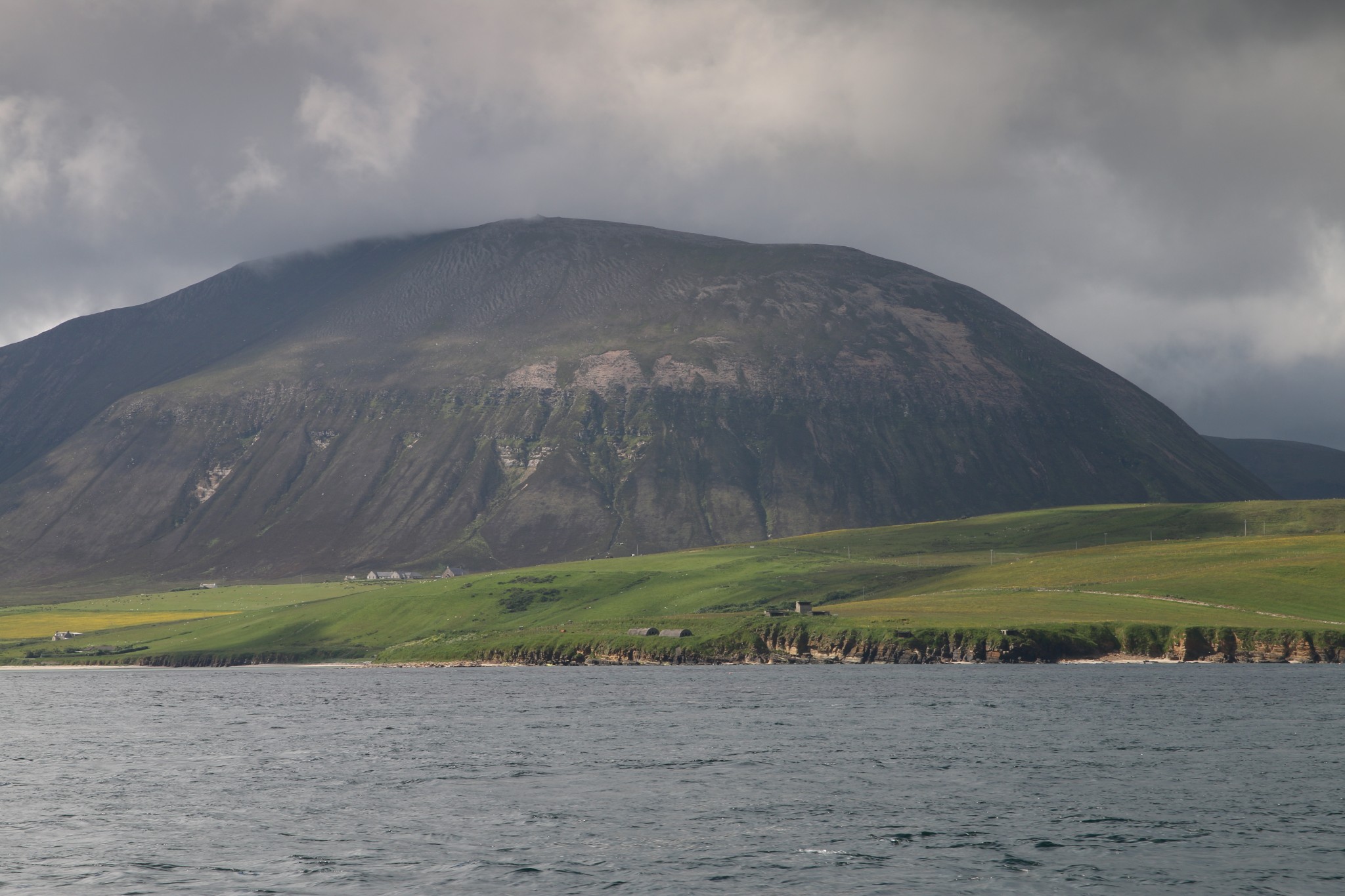
View towards Ward Hill, Hoy The Lyness Naval Cemetery is a poignant place for quiet reflection. The grounds are immaculately-kept and are the final resting place for more than 600 men.
Lyness itself is the port for the car ferry that sails daily between Houton, Flotta and Hoy. It’s a popular service, especially during the summer months, so make sure you book your space as early as possible.
Whilst most folk immediately head north upon arrival in Hoy, the southern end of the island is well worth some of your time. South Walls is actually an island in its own right, albeit linked to its larger cousin by a man-made causeway. The majority of Hoy’s 400-strong population live here, surrounded by green fields and fertile farmland – a dramatic contrast to the rest of the island.
The village of Longhope is the largest in Hoy and is home to an excellent shop with petrol pumps, and you’ll see the distinctive orange form of the local RNLI lifeboat at the nearby pier. The Longhope Lifeboat is a central part of the community here, but it’s a relationship with a tragic past. The Longhope Lifeboat Disaster saw eight local men lose their lives in mountainous seas in 1969. There is a beautiful museum in the former lifeboat shed at Brims, full of artefacts, images and an impressive 1930s lifeboat.
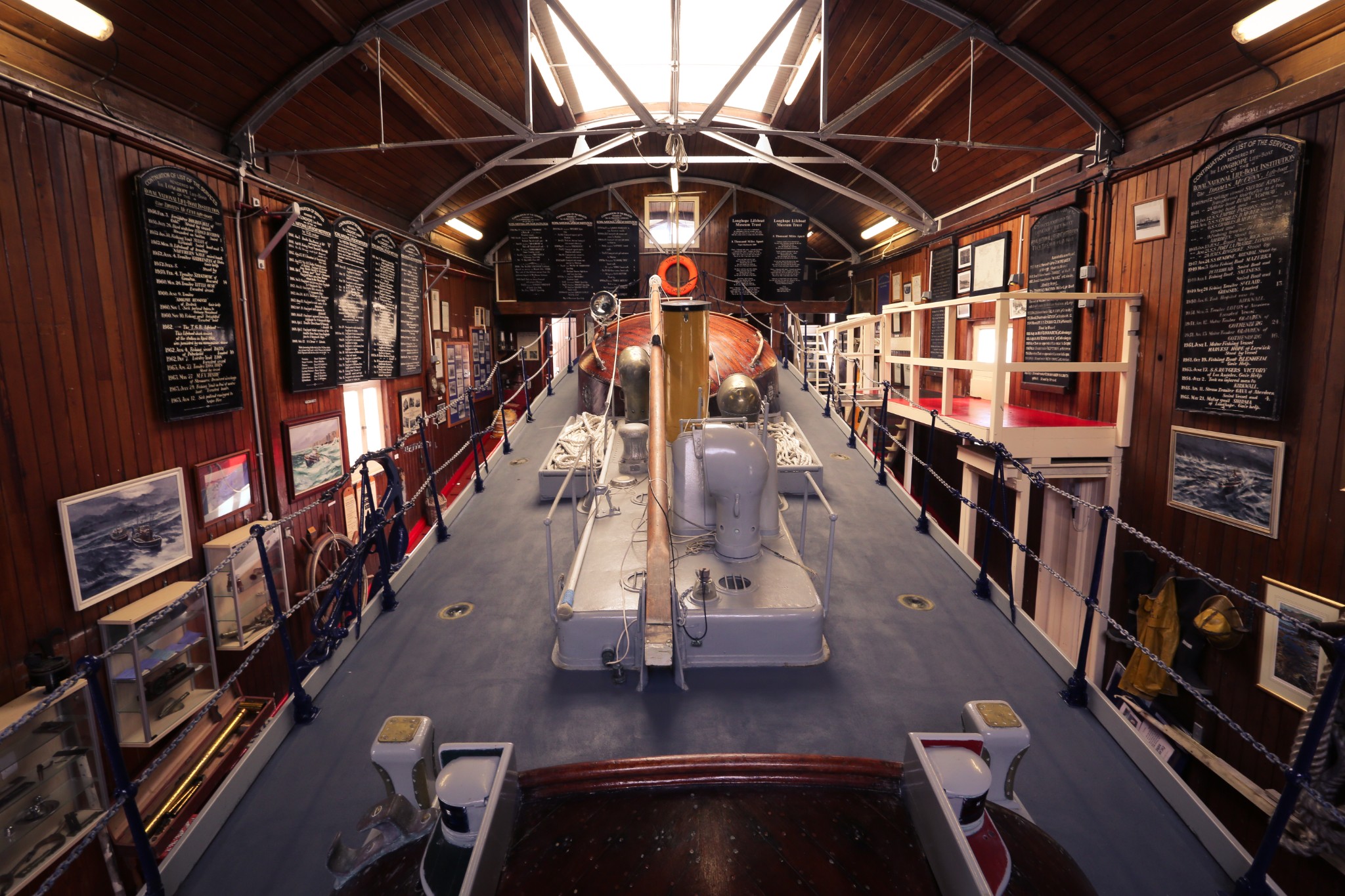
Inside the Longhope Lifeboat Museum Other sites of interest in South Walls include the fascinating Hackness Martello Tower and Battery, built during the Napoleonic wars, and an incredible stretch of coastline, the Hill of White Hamars, on the southern side of the island. It’s full of gloups, geos, sea stacks and natural arches. The full walk can cover around eight miles, but it’s well worth the effort.
Hoy is undoubtedly one of Orkney's most spectacular locations, and with plenty of accommodation and food and drink options, it's a place where two, three or even more days could be spent merely scratching the surface. A car is pretty much essential unless you're planning on walking from Moaness to Rackwick, but there is a community bus service available too. You can also tackle one of our longer walking routes, heading over Cuilags towards the Old Man of Hoy and Rackwick.
Find out more via the excellent Hoy Orkney website.
Graemsay
It's easy to overlook the tiny island of Graemsay, found in-between the Orkney mainland and the north end of Hoy. The passenger ferry from Stromness stops off here on its way to its larger cousin next door. Graemsay offers peace, tranquility and natural highlights. The rugged coastal path is a challenging but rewarding route, providing beautiful views towards Hoy and the Orkney mainland. An easier walk follows the island’s main road and gives walkers the chance to see wildflowers and plenty of birdlife, including hen-harriers, curlews, snipe and much more. Sandside beach is a stunning sweep of sand with views towards Stromness too. Graemsay is also famous for its two lighthouses, Hoy Low and Hoy High, but both are privately owned and not open to visitors. If you’re planning to visit Graemsay, make sure you take your own food and drink as there are no shops or services available, and the only toilet is at the pier.
Hoy is a favourite island in Orkney to visit, with places like the Old Man of Hoy and Rackwick always proving popular.
There is an excellent ro-ro ferry service that links the old naval port of Lyness with Houton on the Orkney mainland. It's important to book your place in advance - especially if you're travelling during the summer months and planning on taking a car.
There is also a regular foot passenger-only ferry that connects Stromness, Graemsay and the north end of Hoy at Moaness. It's a stunning crossing and perfect for those planning on walking to Rackwick, climbing to the top of Ward Hill, Orkney's highest point, or soaking up the peace and beauty of Graemsay.
